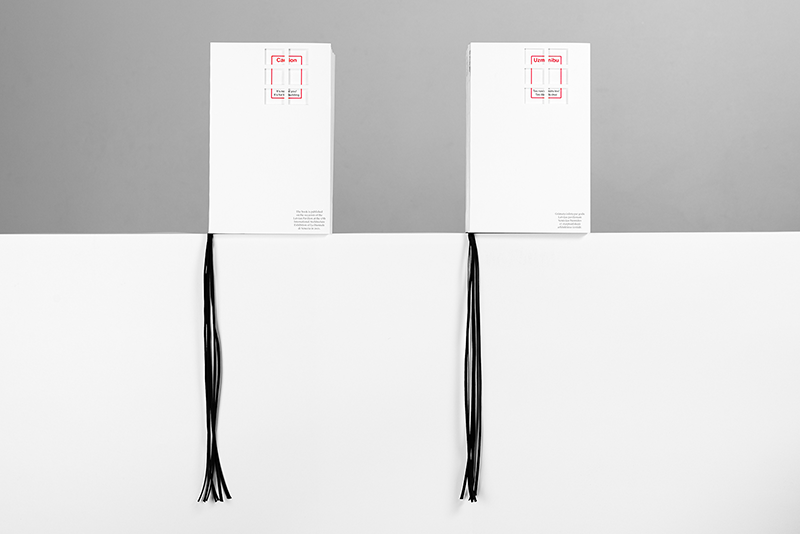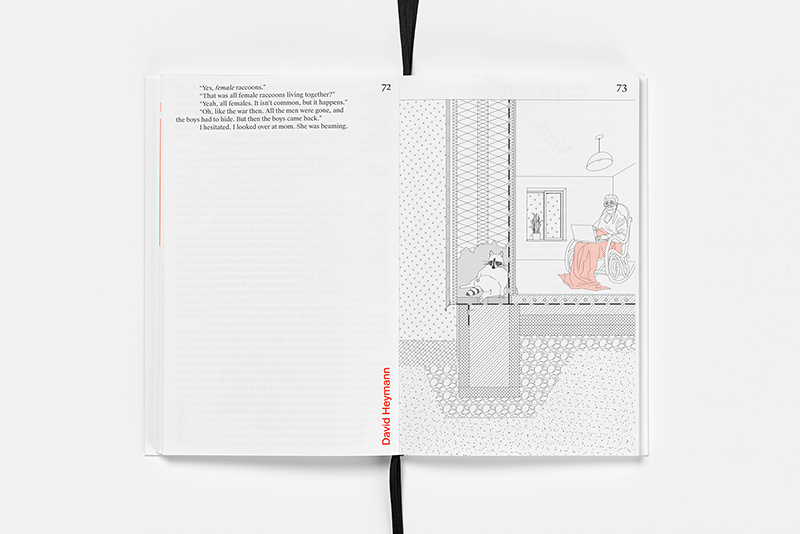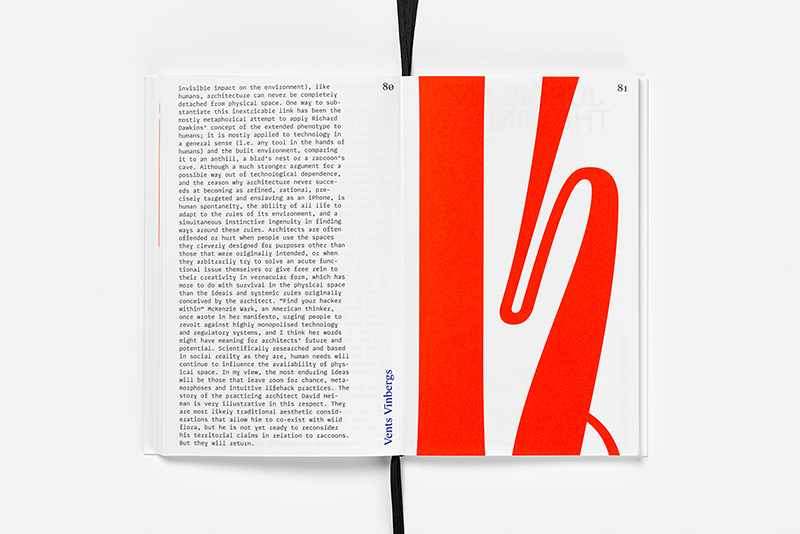Book Tas nav domāts tev! Tas ir domāts ēkai / It’s not for you! It's for the building
Brief description of the project
At the 17th international architecture exhibition La Biennale di Venezia, a team of curators (under the leadership of the architectural office NRJA) examined peoples’ resistance towards new technology as an acute problem in modern architecture. The book supplemented the exhibition in Venice and offers two opposing views on the role of technology in our everyday life. The book contains satirical short stories bordering on the absurd where inhabitants of buildings try and fail to use new technology, as well as balanced arguments laid out in essays by experts in the field who try to solve the problem. By using contrasting typefaces and colours in the design, the book highlights the polarized opinions while the many upside-down book markers reflect the absurd nature of the "techno-nonsense" discussed in the short stories.
Originality and creativity of the idea
By focusing on disturbingly serious and simultaneously amusing techno-nonsense, we emphasize the importance of the human perspective and help users cope with smart devices in modern architecture. Is it possible to reconcile the desire for comfort with the requirements of sustainability which governs the development of technology? We are convinced that a middle ground between private and global needs is the only real option to ensure a viable future for us all.
Definition of the problem and the relevance of the applied solutions
The stories in the book are inspired by true events, often witty and with a touch of techno-pessimism while the essays of experts demonstrate genuine faith in the power of technology. The book reflects opposing attitudes towards machines. These polarized opinions often exist side by side in society and even in individual persons. The publication seeks to prove that solutions which sometimes might seem like they were intended “for the building" are actually “meant for you” – the user.
Co-creation, stakeholder involvement and cooperation during the realisation process
The concept of the book is based on juxtapositions. The content balances utopian visions by techno-optimistic experts with the real-life experiences of sceptics, highlighting the complex and often contradictory relationship between people and technology. Anete Konste (writer), Marta Elīna Martinsone (director, writer), Rvīns Varde (writer) and Ēriks Stendzenieks (advertiser, creative writer) represent the point of view of average users through satire and absurdity. Historian Mārtiņš Mintaurs, designer Jeļena Solovjova, philosopher Artis Svece and architecture critic Vents Vīnbergs address the points of contact where people, technology and architecture meet. Energy efficiency and environmental experts Andra Blumberga, Edmunds Cepurītis, Aija Rūse and architect Ervīns Krauklis shed light on the instrumental role of technology in preventing the global climate crisis. The idea of the book could not be realized without the close cooperation of the authors, curators and designers involved.
Functionality and technological solutions
The design of the publication emphasizes usability and the reader's personal experience – the book is easy to open and contains visual symbols that help distinguish between the different types of texts.
Aesthetics and other experiential dimensions
The illustrations in the book were created by Ivars Veinbergs who used the illustration software AutoCad. The author of the book's design is Aleksejs Muraško who also created the visual identity of the Latvian pavilion in Venice. By using contrasting typefaces and colours in the design, the book highlights the polarized opinions while the many upside-down book markers reflect the absurd nature of the "techno-nonsense" discussed in the short stories.
Economic significance, sustainability and circularity
The publication was printed and bound in the printing house Jelgava.
Social relevance, inclusion, availability and accessibility
The book is available for free in digital format: https://issuu.com/nrja/docs/itsnotforyou-lv-pp_1_ and https://issuu.com/nrja/docs/itsnotforyou-en-pp_1_ By addressing techno-pessimists and the general public, the influence of the publication extends beyond a narrow niche of professionals.
Uzrunājot tehnopesimistus un plašu sabiedrības loku, izdevuma ietekme ietiecas ārpus šaura profesionāļu loka.





